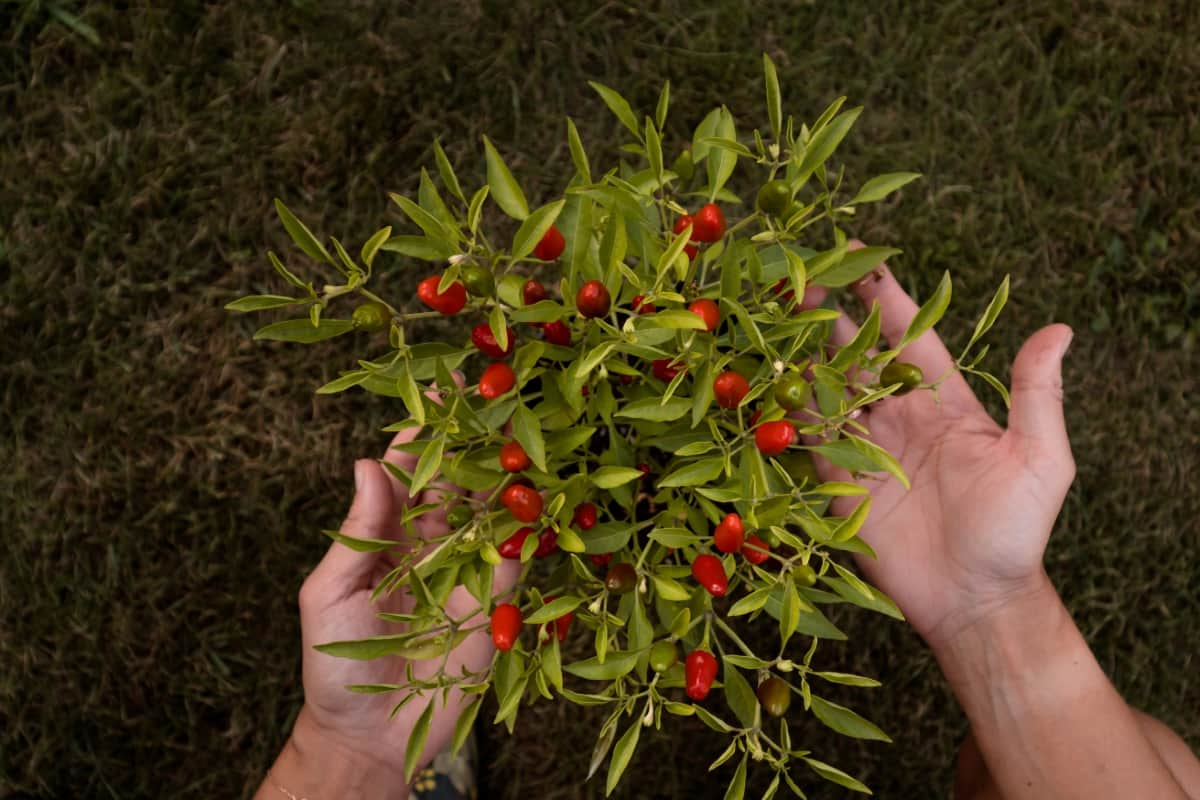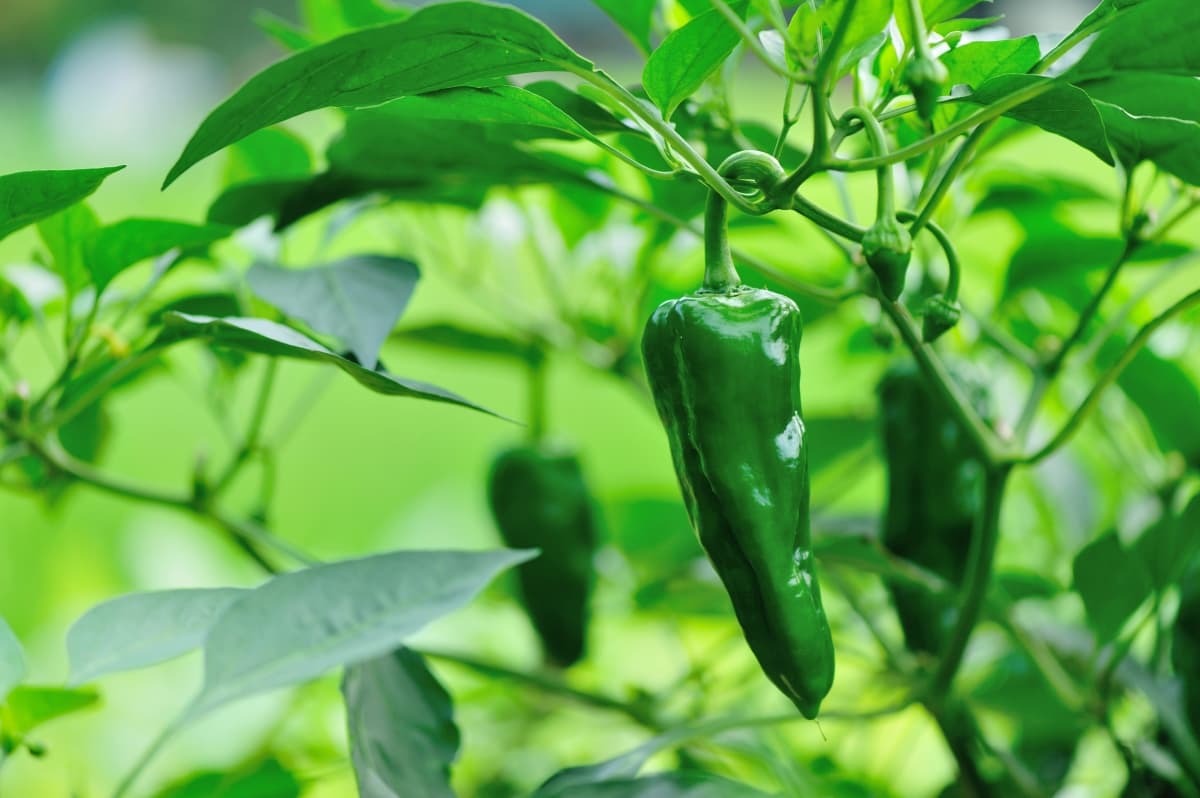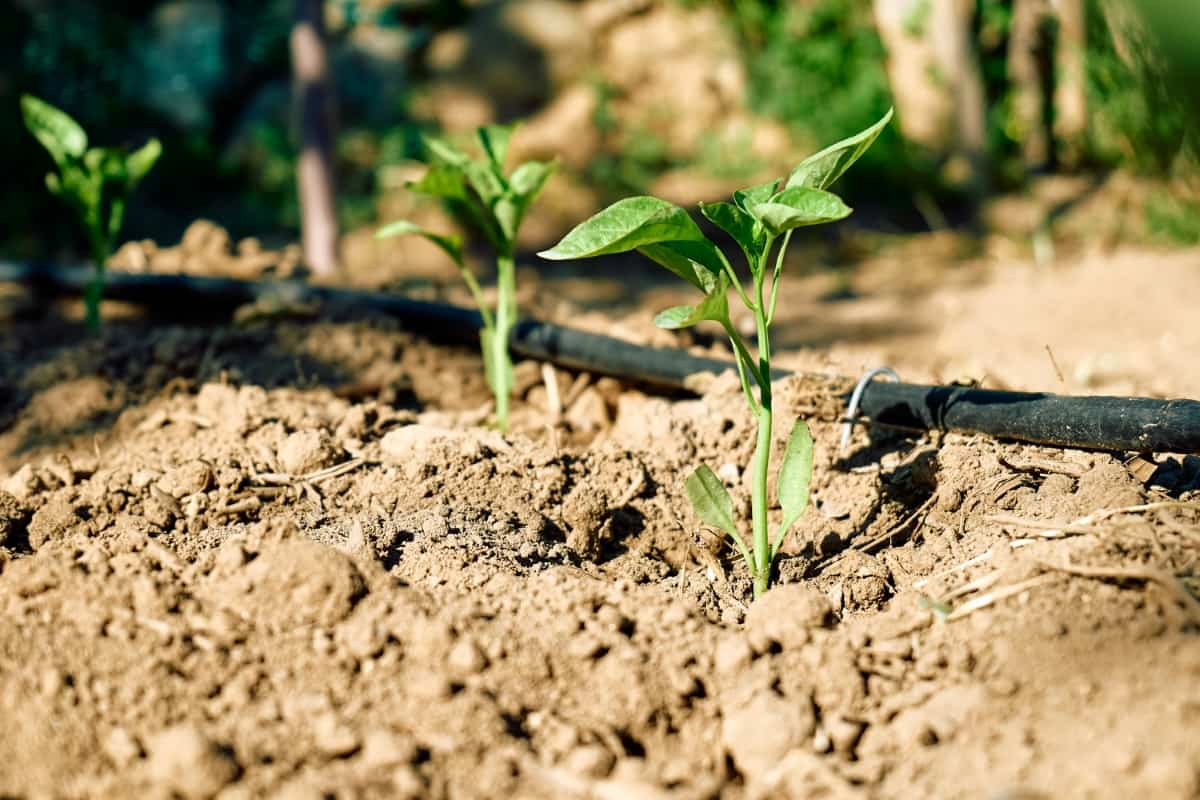Peppers are warm-season vegetables that thrive in hot climates. They come in various shapes, sizes, colors, and levels of spiciness. A wide range of Pepper varieties are available for cultivation, from bell Peppers to jalapenos to habaneros. Overwintering in Peppers refers to protecting Pepper plants during winter.

How to Overwinter Peppers
Understanding the Overwintering Process for Peppers in Cold and Warm Regions
Overwintering Pepper is a process that allows gardeners to keep their Pepper plants alive through the winter months, whether they live in cold or warm regions. It involves providing the right conditions and care so that the plants can survive until spring. To keep Peppers alive during cold weather, bringing them indoors in cold regions where temperatures drop below freezing.
This means carefully digging up the plants from the garden and transplanting them into pots or containers. The goal is to create an environment that mimics their natural growing conditions as closely as possible. Methods for overwintering Peppers in warm climates can be done outdoors with some protection where frost is not a concern. This may involve using row covers or constructing structures to shield the plants from harsh winds and temperature fluctuations.
Pruning back any damaged or diseased foliage helps promote healthy growth during dormancy, while harvesting mature fruits ensures you can enjoy fresh Peppers throughout winter and prepare Pepper plants for winter. Pests and diseases can pose a threat even when Peppers are dormant. Regularly inspect your Pepper plants for signs of infestation or disease symptoms so you can take appropriate action if needed. Maintaining good hygiene by removing fallen leaves or debris helps minimize these risks.
Choosing the Right Pepper Varieties for Overwintering in Different Climates
It is best to choose Pepper varieties with a shorter growing season and are more cold-tolerant in cold regions. Look for varieties such as ‘Hungarian Wax’, ‘Anaheim’, or ‘Jalapeno’, which can handle colder temperatures without sacrificing fruit production. Select heat-tolerant Pepper varieties like ‘Cayenne’, ‘Thai Chili’, or ‘Habanero’ for warm regions.
These Peppers thrive in higher temperatures and produce fruits even during hot summers. By carefully selecting the right Pepper variety based on climate, taste preferences, and disease resistance, you’ll increase your chances of successful overwintering and bountiful harvests year after year.
Preparing Peppers for Overwintering: Harvesting and Pruning Techniques
Harvesting Peppers before overwintering is crucial because any remaining fruits on the plant can rot and attract pests or diseases. To harvest your Peppers, use a pair of sharp garden shears or scissors to cut them from the plant. Be sure to leave a small portion of the stem attached to each Pepper, as removing it can lead to premature spoilage.
In case you missed it: How to Grow Organic Water Pepper: Guide to Planting, Care, and Harvest

After harvesting, it’s time to prune your Pepper plants. This involves cutting back the foliage and removing any dead or diseased branches. Pruning helps promote new growth and improves airflow around the Pepper plant, reducing the risk of mold or fungal issues. When pruning your Pepper plants for overwintering, aim to remove about one-third of their overall height. Trim off any yellowed leaves or stems while looking for signs of pests or disease.
Creating an Ideal Overwintering Environment for Peppers in Cold Regions
How to overwinter Peppers in cold regions? Creating an ideal overwintering environment for Peppers in cold regions ensures their survival and productivity during winter. The first step is to choose a suitable location, such as a basement, garage, or greenhouse, where the temperature can be controlled.
Next, it’s important to provide adequate insulation for the Pepper plants. Additionally, placing mulch around the base of the plants will help retain moisture and regulate soil temperature. Proper lighting is also essential in maintaining healthy Pepper plants during overwintering. Supplemental grow lights should mimic natural sunlight and provide sufficient light intensity for growth.
Providing Adequate Protection for Peppers in Warm Regions During Winter
Creating an ideal overwintering Pepper in different regions is crucial to ensure their survival and productivity during winter. The first step is to choose a suitable location, such as a basement, garage, or greenhouse, where the temperature can be controlled. Next, it’s important to provide adequate insulation for the Pepper plants. Proper lighting is also essential in maintaining healthy Pepper plants during overwintering. Maintaining proper humidity levels is another key factor in creating an ideal overwintering environment.
Adjusting Watering and Fertilization Practices for Overwintered Peppers
Overwatering can be detrimental to maintaining Pepper plants through the winter as it can lead to root rot or other fungal diseases. It’s important to balance keeping the soil moist enough without saturating it. In terms of fertilization, feeding your overwintered Peppers should be done sparingly. Since they are not actively growing during this period, they don’t require as many nutrients as in summer. A balanced fertilizer with lower nitrogen content will help prevent excessive leaf growth while providing essential minerals.
In case you missed it: Pepper Companion Plants: Benefits, What and What Not to Grow with Peppers

Managing Pepper Pest and Disease Issues During the Overwintering Period
One of the challenges that Pepper growers face during the overwintering period is managing pest and disease issues. While Peppers are generally resilient plants, they can be susceptible to pests and diseases. To keep your overwintered Peppers healthy, it’s important to inspect them for any signs of infestation or disease regularly. Look for common pests such as aphids, spider mites, and whiteflies.
If you notice any pests, you can use several organic methods to control them. One option is introducing beneficial insects like ladybugs or lacewings into your garden area. These natural predators will help keep pest populations in check. In addition to pests, overwintered Peppers may also be prone to certain diseases like powdery mildew or root rot. To prevent these issues, ensure your plants have good air circulation by spacing them apart.
Monitoring Temperature and Humidity Levels for Successful Pepper Overwintering
Monitoring temperature and humidity levels is important for successful Pepper overwintering. During the winter months, Peppers require specific conditions to thrive and survive. Temperature plays a significant role in their growth and development. Too cold, and they may suffer from frost damage; too warm, and they may become weak or leggy. There are many tips for successfully overwintering Pepper plants. To monitor the temperature, use a reliable thermometer near your overwintering area.
Aim to maintain temperatures between 10-15°C for optimal Pepper growth during this period. Regularly check the thermometer to ensure that it stays within the desired range. Humidity is equally important for overwintered Peppers as it helps prevent dehydration of the plant’s foliage. The ideal humidity range for Peppers is around 40-60%. If the air becomes too dry, consider using a humidifier or placing water-filled trays nearby to increase moisture levels.
Implementing Proper Lighting Strategies for Indoor Pepper Overwintering
Proper lighting is crucial for the successful overwintering of Peppers indoors. Since natural sunlight may be insufficient during winter, providing supplemental artificial light ensures that your Pepper plants receive the necessary light to thrive. LED grow lights are highly recommended for indoor Pepper overwintering when choosing lighting options.
They are energy-efficient, produce little heat, and can be adjusted to provide specific light spectrums needed by plants at different growth stagesAim for 12-16 hours of continuous darkness each day during their resting period as part of their natural cycle.
Transitioning Overwintered Peppers Back to Outdoor Growing Conditions
As the winter season ends, it’s time to transition your overwintered Peppers back to outdoor growing conditions. This process requires careful planning and gradual acclimation for the health and success of your plants. Start by gradually introducing your Peppers to outdoor conditions. Begin by placing them in a sheltered area such as a porch or patio for a few hours each day, gradually increasing their exposure to sunlight and wind.
In case you missed it: 10 Common Problems With Garden-Grown Peppers: Treatment and Solutions

This will help them adjust to the change in temperature and environmental factors. Monitor weather forecasts closely during this period, ensuring no sudden drops in temperature or frost warnings. If needed, provide temporary protection, such as row covers, until you’re confident that the risk of cold damage has passed.
Before transplanting your overwintered Peppers into their final outdoor growing spot, prepare the soil by incorporating organic matter and ensuring proper drainage. Water thoroughly after transplanting and continue regular watering practices throughout the growing season. Provide support structures such as stakes or cages, especially for taller varieties that may require extra stability as they grow and produce fruit.
Conclusion
Overwintering involves carefully preparing the Pepper plants for winter by harvesting ripe Peppers and pruning any excess foliage. This helps reduce stress on the plant and allows it to focus its energy on surviving through the colder months. Creating an ideal overwintering environment becomes crucial in cold regions where temperatures drop below freezing. This can be achieved by moving potted Pepper plants indoors or providing protective coverings such as mulch or row covers.
- Feed Your Flock for Less: Top 10 Tips to Save on Chicken Feed
- Ultimate Guide to Ossabaw Island Hog: Breeding, Raising, Diet, and Care
- Hatching Answers: The Top 10 Reasons Your Chickens Aren’t Laying Eggs
- Eggs and Economics: Breaking Down the Cost of Raising Backyard Chickens
- Defend Your Greens: Proven Methods to Keep Iguanas Out of Your Garden
- Ultimate Guide to Cinnamon Queen Chicken: A Comprehensive Guide for Beginners
- Ultimate Guide to California Tan Chicken: Breeding, Raising, Diet, Egg-Production and Care
- Ultimate Guide to Marsh Daisy Chicken: Breeding, Raising, Diet, and Care
- 10 Types of Chicken Farming Businesses You Can Start for Profits